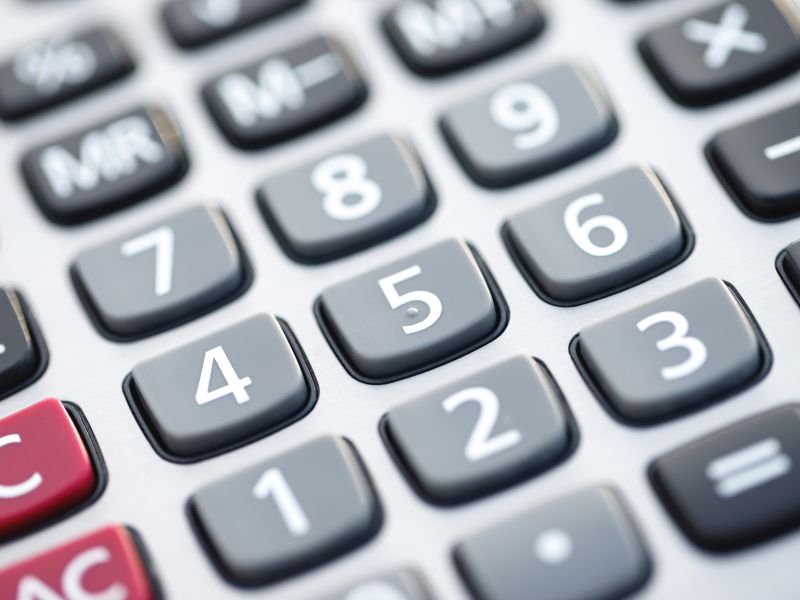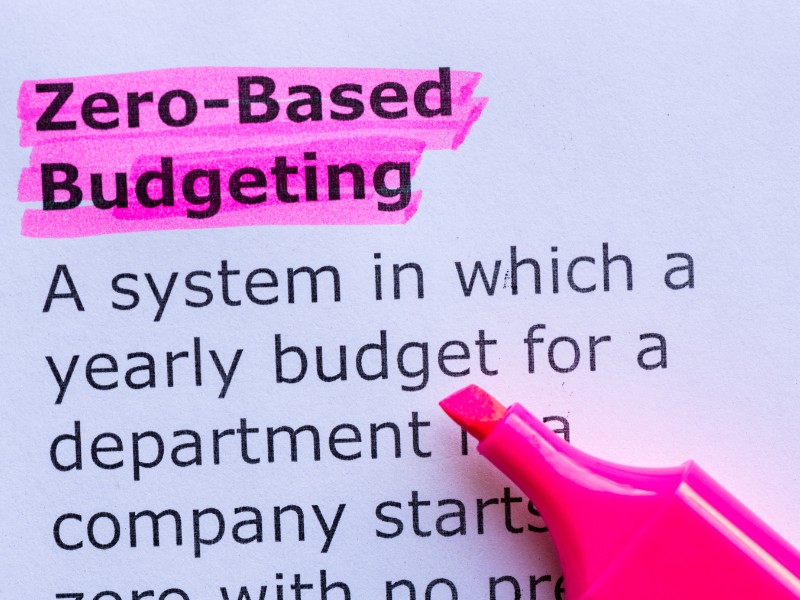The Basics of Family Budgeting: Where to Start?

This post may contain affiliate links. At no cost to you, we earn a commission from qualifying purchases.
Talking about money isn’t always the easiest topic to tackle, especially when it comes to family dynamics. Yet, having a robust budget is essential for financial stability and peace of mind.
Here’s a comprehensive guide to the basics of family budgeting that can serve as a foundation for building a solid financial future.
The Importance of Family Budgeting
The first question that might pop into your mind is, “Why is family budgeting so important?” Having a budget is like having a financial roadmap. It tells you where your money is coming from, where it’s going, and how much is left for other activities or savings.
With a good budget, you’re less likely to run into debt or financial stress. You can also allocate funds for fun stuff like family holidays or outings, without feeling guilty or worried.

Getting Everyone Involved
If you think that the task of budgeting falls only on the shoulders of the breadwinner or the one who’s ‘good with numbers,’ you’re mistaken. Budgeting should be a team effort. When everyone is involved, it fosters a sense of responsibility and awareness about family spending.
Start by scheduling a family meeting where everyone can express their financial goals and needs. Then, you can all work together to develop a budget that accommodates everyone.
The Building Blocks of a Family Budget
Income
When you’re setting the stage for a successful family budget, understanding your income is crucial. This isn’t just about knowing how much comes into your bank account each month. It’s about being comprehensive and covering all avenues from which money flows into your household.
Let’s take a more detailed look at this crucial building block of budgeting.
Types of Income
Firstly, think beyond the most obvious source, which for most people is their salary or wages. Does someone in your family earn a regular bonus or commission? Or perhaps they make money selling stuff at a car boot sale or through apps like Facebook. If so, that needs to be factored into the equation. Here’s a quick rundown of income types you might need to consider:
- Salaries/Wages: This is the income that comes from regular employment. Usually, it’s a fixed sum, which makes it easier to plan around.
- Bonuses/Commissions: If you or a family member works in a job where bonuses or commissions are common, don’t overlook them. However, as they can be variable, it’s wise to be conservative when estimating these amounts.
- Freelance Work or Side Hustles: More and more people are taking on freelance work or running small businesses. If this is the case in your family, it’s important to include this income, even though it might fluctuate.
- Rental Income: If you own additional property and earn rental income, this should be included. Make sure to subtract any costs like mortgage payments, maintenance, or property management fees to get the net income.
- Pensions, Benefits, and Allowances: For some families, income also comes in the form of state benefits, child allowances, or pensions. These should also be part of your budget.
- Investment Returns: Whether it’s dividends from shares, or interest from savings accounts, investment returns can add to your income. They often fluctuate, so they may need to be estimated conservatively.
After-Tax Income
In the realm of budgeting, gross income can be misleading. What you should really focus on is your net income, which is the money you actually take home after taxes and any other deductions like National Insurance, pension contributions, or student loan payments.
This gives you a more accurate picture of your available resources. The aim is to live within your means, and for that, you need to know how much you really have at your disposal each month.
Irregular Income
If your family’s income varies from month to month — perhaps because of freelance gigs, variable working hours, or seasonal work — you’ll need to be extra cautious.
One way to approach this is to calculate your average monthly income based on the last six to twelve months. You could also base your budget on the lowest income month from the past year to create a sort of “worst-case scenario” budget. This way, you’re more likely to be pleasantly surprised than caught short.
Annual Review
Your income isn’t set in stone. It can change due to job switches, promotions, or lifestyle changes like the birth of a child. That’s why it’s vital to review your income at least annually or when significant life changes occur.
Expenses
Understanding expenses is equally as crucial as knowing your income when creating a robust family budget. Ignorance is not bliss in this case; you need a clear picture of where your money is going. This entails examining both fixed and variable expenses, and understanding how they impact your financial well-being. Let’s delve into these two types of expenses in greater detail.
Fixed Expenses
These are the predictable, recurring costs that stay the same month after month. You can almost set your watch by them. Here’s a breakdown of common fixed expenses:
- Mortgage Payments or Rent: For most families, this is the biggest monthly outlay. It’s usually the same amount each month, making it easier to plan for.
- Utility Bills: Though they may vary slightly, bills for electricity, gas, water, and broadband are generally consistent. Some families even opt for payment plans that average out the cost over the year to make it a fixed expense.
- Loan Payments: If you have personal loans or car loans, the monthly instalments typically stay the same.
- Subscriptions and Memberships: These can range from your Netflix subscription to your gym membership. Since you know these amounts in advance, they’re easy to budget for.
- Insurance Premiums: Whether it’s your car, home, or life insurance, premiums are usually a set monthly or annual cost.
Because fixed expenses are predictable, they’re the easiest to budget for. However, they’re often also the least flexible in terms of adjustment. If you’re looking to cut costs, fixed expenses may not offer much room for manoeuvre, unless you’re willing to make big life changes like moving to a cheaper home.
Variable Expenses
Variable expenses are the costs that can swing from one extreme to the other each month. They’re the wild cards of your budget, but they’re also where you have the most control in terms of spending. Here are some examples:
- Groceries: While everyone needs to eat, how much you spend on groceries can vary. One week you might be hosting a dinner party, and the next, it could just be basic essentials. Check out our guide on how to reduce your weekly food bill.
- Entertainment: This category includes anything from cinema tickets to a day out at a theme park. The cost can differ dramatically depending on your activities. Check out our guide on how to save money on your social life.
- Petrol: If you drive, you know that petrol costs can fluctuate depending on how much you’re on the road.
- Clothing: Some months you might not buy any new clothes, but then school starts and the kids need new uniforms. Check out our guide on how to save money on clothing.
- Dining Out: Whether it’s grabbing a takeaway or enjoying a fine dining experience, these costs can add up but are often the first to be cut when you’re tightening the purse strings.
Variable expenses require more attention because they’re not set in stone. The good news is, they offer the most opportunities for saving. By being mindful of variable expenses, you can find areas to cut back when necessary.
Tracking and Review
The best way to keep on top of your expenses, both fixed and variable, is by tracking them. This can be as simple as keeping a record in a notebook or as high-tech as using a budgeting app that syncs with your bank accounts. Whichever method you choose, the key is to make it a habit.
Review your tracked expenses regularly, say once a week or at least once a month. This helps you identify any alarming trends and adapt your budget accordingly. You can’t manage what you don’t measure, so tracking is crucial.
Deep Dive into Savings and Investments
When it comes to family budgeting, focusing only on immediate expenses and ignoring savings and investments is a common mistake. But think of these savings as your future self thanking you. Making consistent contributions towards savings, investments, and retirement funds should be as regular a part of your budget as paying bills. Let’s explore why they’re so vital and how to approach them.
The ‘Pay Yourself First’ Principle
The adage “pay yourself first” is a fundamental tenet of personal finance, and it’s one that should be integrated into your family budget. The principle is straightforward: before you pay your bills or spend money on other expenses, allocate a portion of your income to your savings or investments.
By doing this, you’re treating your future financial well-being as a non-negotiable expense, on par with rent or utilities. This ensures you don’t overlook it or leave it for last, where it’s most likely to be forgotten or ignored.
Types of Savings and Investments
Here’s an overview of common forms of savings and investments that families might consider:
- Emergency Fund: As mentioned earlier, having an emergency fund is essential. This should be easily accessible cash that can cover three to six months’ worth of living expenses.
- Retirement Funds: Contributing to a pension plan, like a workplace pension or a personal pension scheme, is crucial for long-term financial stability. Given that retirement may last for decades, the more you contribute now, the more comfortable you’ll be later.
- Education Savings: If you have children, saving for their education can be a huge financial commitment. Consider plans specifically designed for education savings, such as a Junior ISA in the UK.
- Investments: These could be in the form of stocks, bonds, or mutual funds. While they come with risk, they also offer the potential for long-term growth.
- Property: For some families, property can be both a long-term investment and a form of savings. Though property comes with its own set of expenses and responsibilities, it can also serve as a nest egg for the future.
Setting Goals
Having clear goals for your savings and investments will help guide how much you need to set aside each month. Whether it’s buying a home, sending your kids to university, or going on a dream holiday, having a goal can motivate you to stick to your savings plan.
Regular Review and Rebalancing
Financial goals and situations change, so your approach to savings and investments should be flexible. Aim to review your financial goals and the performance of your investments annually. If something’s not working or if there’s been a significant life change—a new baby, a job change, or even a global pandemic—you’ll need to reassess and adjust your savings and investment plans accordingly.
Discretionary Spending
In the world of budgeting, there’s a line of demarcation between needs and wants, necessities and luxuries. Once all the must-haves like rent, utilities, groceries, and savings are squared away, what you’re left with is discretionary spending. While it might sound non-essential, it’s actually a crucial aspect of any budget for a well-rounded lifestyle. Let’s go into the nuances of what discretionary spending really means for your family budget.
The Role of Discretionary Spending
Discretionary spending often brings the ‘life’ into lifestyle. It’s the money you spend on the things that make life enjoyable, whether it’s a meal out, a family day trip, or that gaming console your kids (or maybe you) have been eyeing. In essence, it’s your “fun money.”
However, discretionary spending can be a double-edged sword. On one hand, it provides room for activities that can enrich your life and create happy memories. On the other hand, if not managed wisely, it can quickly derail your budget.
Prioritising Your Wants
With discretionary spending, the choices are seemingly endless, but the funds are not. Therefore, prioritising becomes key. Do you want to go on a family holiday this year? Or maybe you’d rather invest in home improvements? By having a conversation with family members about how this pot of money should be used, you’re less likely to fritter it away on impulse buys.
The Benefit of Budgeting for Fun
Some might argue that the concept of budgeting takes the fun out of discretionary spending, making it seem like another chore to check off the list. But in reality, having a budget for discretionary spending means that you can enjoy your chosen activities guilt-free. You’re not dipping into funds allocated for other essentials or going into debt; you’re spending money set aside specifically for enjoyment.
Building it Into the Budget
It’s a good idea to earmark a specific amount or percentage of your income for discretionary spending each month. Just like you do for other expenses, track this spending diligently. Whether you’re using a dedicated envelope for cash, a separate debit card, or a budgeting app, keeping an eye on your discretionary spending will help you make informed decisions and keep from going overboard.
When Times Are Tough
It’s worth mentioning that discretionary spending is often the first to be slashed when financial times are tough. And that’s okay; it’s a reflection of its non-essential nature. However, even in lean times, try to allocate even a small amount for some form of enjoyment. The psychological benefits of having even a mini-break from financial worries can be enormous.
Budgeting Tools
As the saying goes, there’s more than one way to skin a cat, and this is certainly true when it comes to budgeting. The trick is to find a method that complements your lifestyle and helps you maintain financial discipline. From digital solutions like apps to traditional methods like pen and paper, there are plenty of tools out there to help you budget. Let’s explore some of the most popular options.
Digital Tools: Apps and Software
In an increasingly digital world, it’s no surprise that many people turn to apps and software for their budgeting needs. These digital solutions offer a range of features:
- Budgeting Apps: Apps like YNAB (You Need A Budget), PocketGuard, and Mint provide a user-friendly interface to track income, expenses, and even savings goals. Most of these sync directly with your bank accounts, making the tracking process seamless.
- Spreadsheets: Google Sheets or Microsoft Excel can be highly effective budgeting tools. While they require a bit more manual input compared to specialised apps, they offer unparalleled customisability.
- Online Platforms: Websites like Money Dashboard in the UK provide a more extensive view of your finances, linking various accounts from different banks and providing analytical tools.
These tools offer the benefit of convenience and instant data tracking. For those who are tech-savvy, or at least willing to become so, digital tools can be a godsend.
Traditional Tools: The Pen-and-Paper Approach
Despite the digital boom, some people find comfort in the tangible act of writing down numbers and calculations.
- Notebooks and Ledgers: A dedicated budgeting notebook can serve as a straightforward but effective budgeting tool. All you need is a pen and some discipline.
- Envelopes: The envelope system involves allocating a set amount of cash in envelopes for different spending categories. Once the cash is gone, that’s it until the next budget cycle.
This old-school approach offers a tactile experience that some find more real and therefore more impactful. If you find that physically writing things down or handling cash helps you think more clearly about your spending, then this might be the method for you.
Hybrid Methods
For some, a blend of digital and traditional methods works best. You might track regular monthly expenses using an app while employing a notebook for discretionary spending. This approach offers the best of both worlds, allowing you to leverage the advantages of each method where they’re most effective.
The Importance of Consistency
Whichever tool you choose, consistency is key. Regularly update your budget, track your spending, and review your financial goals. Whether you do it daily, weekly, or monthly is up to you, but make it a habit. An unused budgeting tool, no matter how sophisticated, is useless.
Establishing a Routine
Budgeting is not a ‘set it and forget it’ kind of thing; it requires ongoing attention. Plan to review and adjust the family budget regularly, at least once a month. Keep track of spending, update for any changes in income or expenses, and see how well everyone is sticking to the budget. This helps you spot trends and make adjustments as needed.
The Emergency Fund
Having some money set aside for emergencies is essential. Whether it’s a broken boiler or an unexpected medical bill, life has a way of throwing curveballs. Aim to have at least three to six months’ worth of living expenses saved up. This isn’t something that happens overnight, but gradually incorporating this into your budget will go a long way.
Learning to Cut Costs
It’s quite natural to want the best for your family. However, budgeting often involves making hard choices. This could mean cutting back on dining out, or it might involve renegotiating bills or cancelling subscriptions you don’t use. Where you make the cuts is up to you and your family’s priorities, but being frugal doesn’t mean living a lesser life. In fact, it’s about finding smarter ways to enjoy the things you love.
Financial Education for Kids
If you have children, involving them in the budgeting process can be an invaluable educational experience. You don’t have to dive into all the nitty-gritty details, but giving them an overview can impart important lessons about money management. Talk about savings, the importance of budgeting, and even let them have a say in some of the family’s financial decisions.
Conclusion
Creating and sticking to a family budget might sound daunting, but it doesn’t have to be. Once you get the hang of it, budgeting becomes second nature. And the rewards — financial security, less stress, and even a happier family life — make all the effort worthwhile. So take that first step today, gather your family, and start planning for a secure and comfortable future.
Featured image by DragonImages via Canva.com



